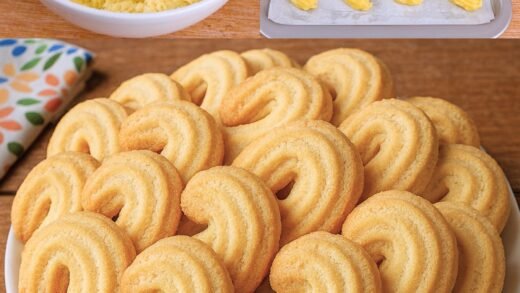Why This Bread Dough Is So Loved
-
Only 6 simple ingredients — All pantry staples, no preservatives or additives.
-
Super fluffy interior — Perfect flour-to-water ratio plus warm proofing for an airy crumb.
-
Versatile and reliable — Great for sandwich loaves, dinner rolls, pizza crusts, or cinnamon buns.
-
Beginner-friendly — No bread machine required; just a bowl and your hands!
-
Freezer-ready — Make a batch, freeze shaped dough, and bake fresh whenever you want.
Ingredients
-
4 cups all-purpose flour (500g)
-
2 tsp salt (10g)
-
2 tsp sugar (10g)
-
1 packet active dry yeast (7g)
-
1½ cups warm water (355ml)
-
2 tbsp olive oil (30ml)
Step-by-Step Instructions
1. Activate the Yeast
In a large bowl, combine warm water, sugar, and yeast. Let it sit 5–10 minutes until frothy.
2. Make the Dough
Add flour, salt, and olive oil to the bowl. Mix until a sticky dough forms.
3. Knead to Smoothness
Transfer dough to a floured surface and knead for 5–7 minutes until soft and elastic.
4. First Rise
Place dough in a greased bowl, cover with a towel, and let rise in a warm spot for 1–1.5 hours until doubled.
5. Shape the Dough
Punch down to release air, divide, and shape into loaves or rolls.
6. Second Rise
Place shaped dough on a greased or parchment-lined tray, cover, and let rise 30–45 minutes.
7. Bake
Preheat oven to 375°F (190°C). Bake for 25–30 minutes until golden. Cool on a wire rack.
Chef’s Tips for Fluffiest Results
-
Use a thermometer to keep water at around 110°F (43°C) for optimal yeast activation.
-
Slow, cool rises improve flavor and texture.
-
Brush baked bread with melted butter for a soft, shiny crust.
-
Fold in herbs, cheese, or olives during shaping for extra flavor.
Creative Uses for This Bread Dough
This dough is incredibly versatile:
-
Dinner rolls: Shape into 12 balls, bake in a buttered pan.
-
Garlic knots: Roll into ropes, tie knots, brush with garlic butter, and bake.
-
Mini pizzas: Roll small rounds, prebake, then add toppings and finish baking.
-
Stuffed buns: Fill with cheese, sausage, or veggies before baking.
How to Get the Best Rise
-
Warm environment: Aim for 75–80°F (24–27°C) for proofing.
-
Use your oven: Preheat to lowest setting for 2 minutes, turn off, and place dough inside to rise.
-
Don’t rush the second rise: It creates airy texture and prevents dense bread.
-
Visual cues: Dough should nearly double and bounce back slowly when poked.
Signs of Proofing Done Right
-
Underproofed: Dense, uneven crumb and less rise.
-
Overproofed: Dough may collapse, large uneven holes, weak structure.
-
Just right: Evenly risen, slightly domed, smooth surface, and springy feel.
Poke test: Press dough gently — if it springs back slowly and leaves a slight dent, it’s ready!
Baking Enhancements & Toppings
-
Glossy crust: Brush with egg wash (1 egg + 1 tbsp water) before baking.
-
Velvety finish: Brush with melted butter after baking.
-
Crunchy crust: Sprinkle sesame, poppy, or everything seasoning before baking.
-
Sweet touch: Dust with cinnamon sugar for breakfast rolls or dessert buns.
Fun Shape Ideas for Special Occasions
-
Braided loaf: Divide dough into three strands and braid.
-
Pull-apart rolls: Roll small balls and bake close together in a pan.
-
Twisted knots: Twist ropes into garlic knots or herb spirals.
-
Mini loaves: Shape into smaller loaves, perfect for gifts or portion control.
Storage & Freezing
-
Room temp: Store in a bread box or container for 2–3 days.
-
Fridge: Keeps up to 1 week, rewarm before serving.
-
Freezer: Wrap shaped dough or baked bread tightly; freeze up to 2 months.
To thaw frozen dough: Refrigerate overnight, then let rise at room temp before baking.
Try this dough and unlock endless baking possibilities—soft, fresh bread anytime, all from scratch!



